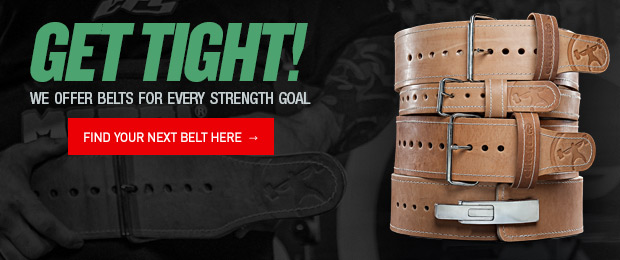
I believe abdominal training is often one of the most confusing topics in the gym. Nevertheless, many people include this type of training in their workout, yet they have the incorrect thought process as to what will be achieved. As a result, from this hot topic, we tend to see outrageous exercises, movements, and even classes that claim they will give you a stronger core or a six-pack in days.
However, this frequently leads to low back pain and imposes dysfunctional movement patterns in functional activities.
RECENT: Four Keys to Manual Resistance
Instead, I encourage a paradigm shift in your abdominal training mindset to optimize your training to obtain the six-pack look. Furthermore, in this article, we will examine the why for abdominal training and explain what makes a good exercise.
1. Understand Your Why for Training Abs
Regardless of your ab exercise of choice, you need to have a good understanding of why you are performing the given movement. Let’s clear our mind of the obsolete thought process that direct abdominal work will give you a six-pack. Below is an example of the mindset that should be used to attack your abdominal training:
I’m performing X abdominal exercise because it will then allow me to perform X resistance exercise correctly (i.e., squats). As a result, from a stronger core, I am able to push myself harder without compensating during these X resistance exercises. Therefore, I am able to impose more stress on the system to increase my metabolic rate. From this, I am able to decrease body fat and increase lean muscle mass over time. From the stronger foundation (core) and the increased demand on the system, (harder workouts and increased metabolism), I will begin to see abs.
The abdominal exercise of choice is not what is giving you the six-pack look. The abdominal exercise is improving your functional abdominal strength (if performed correctly), which allows you to push yourself harder in the gym, which has a greater physiological impact to decrease overall body fat (i.e., you can see your abs).
2. What is a Good Ab Exercise?
There are hundreds of exercises that could be labeled as a “good ab exercise.” However, let’s not think about a specific exercise, but look at why that given exercise is challenging and how it is able to carry over to your resistance training. Once you understand these concepts, you can essentially make any movement a good abdominal exercise. Let’s quickly look at the squatting example again.
For a squat, what needs to occur in order to not compensate? In general, as we squat, we need to be able to withstand a flexion, extension, and rotational movement. In other words, we need to resist the hip, thorax, and the neck from falling forward, backward, and rotating.
So, what should our abdominal training focus on (HINT: I just gave you the answer)? It should be anti-flexion, anti-extension, and anti-rotation in nature. Why? Again, if we are able to resist falling into these compensations, we are able to continuously challenge our body (going back to Section 1 of this article).
Change your mindset the next time you are doing that plank (anti-extension abdominal exercise) and holding it for minutes. The goal for performing is not to obtain a six-pack. The goal is to withstand the forces that are acting on the pelvis and not allowing it to fall into extension. Fast forward to performing a squat. In order to perform it correctly and challenge the proper muscles, you have to be able to withstand the extension forces that act on the pelvis. Sound familiar?
Full Circle Moment
- Understand why you're performing a particular abdominal exercise
- Be aware as to how resisting that motion will help your bigger lifts (i.e., anti-extension from planks improves squats)
- Get stronger in resisting that compensatory motion (getting a stronger core and knowing why and how it will help)
- Train hard (the ability to resist the compensatory motion allows you to do so)
- Increased metabolic rate (from harder training)
- Decreased body fat (from increased metabolic rate)
- SIX-PACK! (from decreased body fat over the abdominals)
As a quick side note, we are all cognizant that the quote, "Abs are made in the kitchen" is generally correct. Simply stated, if you have body fat over the abdominals, you won't see them. A healthy eating lifestyle is a critical component if you want to see your abs. However, the nutritional demands for a six-pack are generally well understood.
Brian is the owner of Functional Training Studio in Charlotte, North Carolina. Brian has been training clients for over six years and is always looking at ways to improve his technique. He utilizes positional asymmetries that exist within the body to help clients and athletes improve their function and overall performance capacity. Brian has a degree in exercise science and is a certified strength and conditioning coach through the NSCA. Additionally, he plans to continue his education in 2017 in a doctorate of physical therapy program. For additional questions, Brian can be reached at FTStudio130@gmail.com.
Header image courtesy of Roman Iegoshyn © 123rf.com










